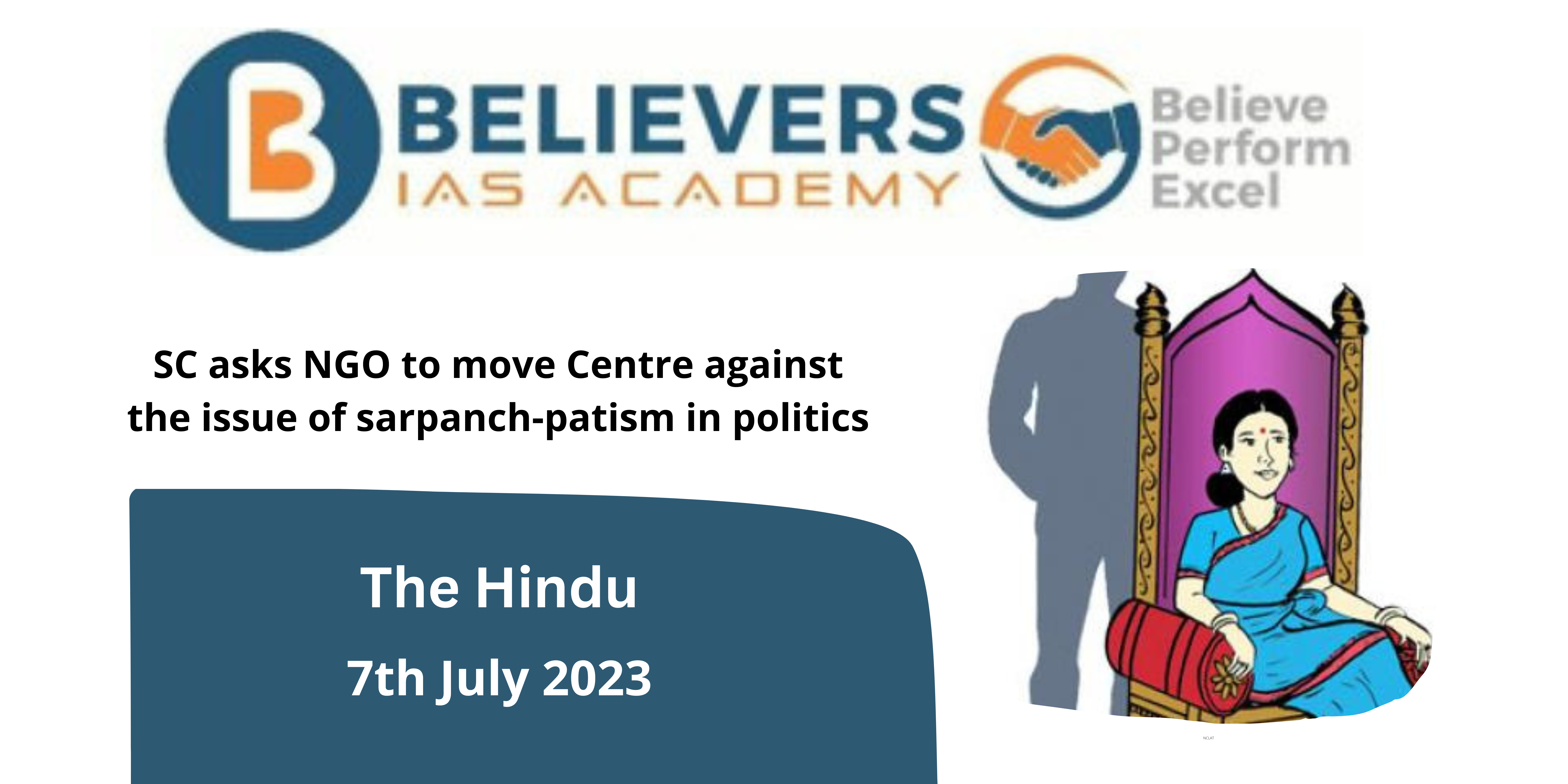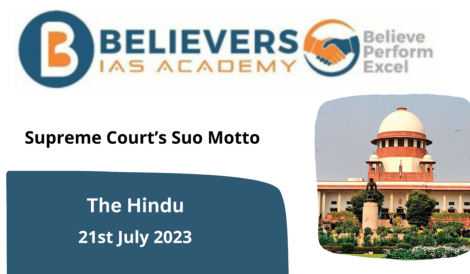SC asks NGO to move Centre against the issue of sarpanch-patism in politics
Context :
The NGO claimed that the practice of unelected male relatives controlling politics and decision-making behind women amounted to a “sheer mockery of constitutional democracy.” The NGO was represented by attorney Swati Jindal. This is how things stand thirty years after the 72nd Constitution Amendment Act of 1992 established a one-third quota for women in village, block, and district levels of panchayat governance.
What is Sarpanch-Pati system?
- Through the 73rd constitutional amendment, women were given a third of the seats in Panchayats. Several states increased the percentage of reserved seats to 50%. This had the goal of empowering women and assuring their involvement in local politics and decision-making.
- However, the planned benefit of the emergence of women leadership at the Panchayat level was not completely realised due to the weak socioeconomic situation of women and the current patriarchal system. Husbands of elected women’s representatives effectively control politics and make decisions. ‘Sarpanch pati’ is the name given to this phenomenon.
What does the 73rd constitutional amendment bring to society?
The Panchayati Raj Act, also known as the 73rd Constitutional Amendment Act, was passed in 1992 to decentralise authority and foster local self-governance in India’s rural regions. The following are some of the 73rd Amendment Act’s standout characteristics:
- System of Three Tiers for Panchayati Raj: The amendment required each state to set up a system of three tiers for Panchayati Raj institutions. In this system, the village level is represented by Gramme Panchayats, the block level by Panchayat Samitis, and the district level by Zila Parishads. This system of tiers makes sure local government is well-organized and carried out.
- Direct Elections: The Panchayat members are chosen through a direct election. Members of the Gramme Panchayats are chosen by the villagers. The Panchayat Samitis and Zila Parishad members are chosen by the elected Gramme Panchayat members. As a result, the community can hold the Panchayat members accountable.
- Reservation of Seats: The 73rd Amendment Act mandates the reservation of seats in the Panchayats for women and members of Scheduled Castes (SCs) and Scheduled Tribes (STs), two marginalised groups in society. Women are given one-third of the seats, and SCs and STs are given seats according to the local population of each group.
- Powers and Duties: The Panchayats have been given the right and responsibility to create plans for local social and economic development. They can take on a range of development projects, including the building and upkeep of roads, sewage systems, water supplies, health and educational facilities, programmes to fight poverty, and rural development efforts. The Panchayats are also in charge of carrying out government initiatives at the local level.
- State Finance Commissions: State Finance Commissions must be established in each state, according to the 73rd Amendment Act. These commissions are in charge of examining the Panchayats’ financial standing and recommending how funds should be distributed between the state governments and the Panchayats. The Panchayats are given financial autonomy and a fair and equitable allocation of resources for local development as a result.
What were the reasons for the rise of the Sarpanch Pati system?
- The poor social standing of women: Women generally have limited access to education, are confined to home settings, lack economic freedom, and are not permitted to participate in family decision-making. They are reduced to having ‘titular heads’ as a result of their lesser social status, which makes it difficult for them to oppose their husbands. Most of the time, these “takeovers” have occurred without the wife’s knowledge.
- Lack of skills: This predicament resulted from raising the reserve for women to 50% without making any effort to improve their capability, train them, or instil confidence in them.
- Social barriers resulting from traditional society: Indian society is still traditional and conservative in rural areas, for example, the tradition of wearing a veil or parda is very strong in North Indian states. Women are discouraged from being in public places, and even local government officials avoid interacting with women because of their conservative outlook. This effectively gives husbands power over the day-to-day operations of panchayats. Even in Gramme Sabha meetings, elected representatives’ husbands take the lead. Women are also expected to perform the duties associated with managing household responsibilities.
- Government inaction: Despite this pervasive problem, the government did not take any action to stop it, whether through strong legal deterrence or increased public awareness.
What was the instruction given by the Supreme Court in this matter?
- On the subject of men using their influence to support elected women in local politics, the Supreme Court of India released a statement.
- The court advised the NGO Mundona Rural Development Foundation to address its issues with the Ministry of Panchayati Raj.
- The NGO maintained that it was unconstitutional for male relatives to represent women in politics and decision-making.
- The court argued that the petitioner’s objections should be taken into account and that the Ministry of Panchayati Raj should look for more effective ways to carry out the goals of the reservation.
- In the end, the court concluded that the government should deal with the problem of men controlling elected women in local politics rather than the judiciary.




